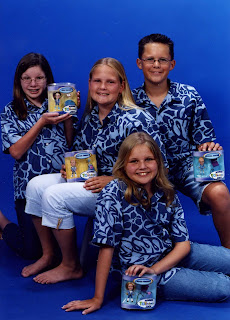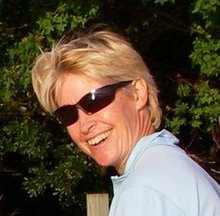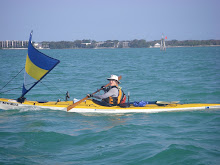 I thought folks may like to see what a 'real' Kiwi bird looks like - the feathered variety with long beak rather than the one with the ski-jump nose (or Cape Cod look-a-like, as my 5th form geography teacher once described it).
I thought folks may like to see what a 'real' Kiwi bird looks like - the feathered variety with long beak rather than the one with the ski-jump nose (or Cape Cod look-a-like, as my 5th form geography teacher once described it). 
A Kiwi who's lived a few places around the world who's mad on the outdoors.
 I thought folks may like to see what a 'real' Kiwi bird looks like - the feathered variety with long beak rather than the one with the ski-jump nose (or Cape Cod look-a-like, as my 5th form geography teacher once described it).
I thought folks may like to see what a 'real' Kiwi bird looks like - the feathered variety with long beak rather than the one with the ski-jump nose (or Cape Cod look-a-like, as my 5th form geography teacher once described it). 
 For the first time since WaterTribe's Everglades Challenge in early March, I paddled. Last night I was given a pass - the nursery's finished (well, still got to put those cupboard doors back on), the crib's up and the carry chair has been professionally fitted into the back seat of the car. Only 12 more days to go...
For the first time since WaterTribe's Everglades Challenge in early March, I paddled. Last night I was given a pass - the nursery's finished (well, still got to put those cupboard doors back on), the crib's up and the carry chair has been professionally fitted into the back seat of the car. Only 12 more days to go... any foreshore development that twist and whirl to open up vistas that make a heart swell - just don't look east to the nuclear plant puffing away.
any foreshore development that twist and whirl to open up vistas that make a heart swell - just don't look east to the nuclear plant puffing away. Along with many of my fellow Kiwi, I had high hopes that NZ's Black Caps, our national cricket team, may have won their semifinal World Cup match against Sri Lanka. Just maybe... we could beat our record of getting no further than a semifinal.
Along with many of my fellow Kiwi, I had high hopes that NZ's Black Caps, our national cricket team, may have won their semifinal World Cup match against Sri Lanka. Just maybe... we could beat our record of getting no further than a semifinal.The Tigers held true to their word of not attacking while the cricket was on as they "would be watching the match".
However, it was short-lived as just five hours after the match two policemen were killed in a roadside bomb attack.
So I'm glad (a wee bit) we lost.
Sri Lanka's playing Australia in the final on Sunday (our U.S. Monday). Just imagine if Sri Lanka wins. Could this perhaps mean a longer-lasting truce?
It could be... cricket!
 nd the poignant saying for the day has long been “lest we forget”. Many folks buy the red poppy sold by the Returned Services Association (RSA) to pin to their lapels, representing Gallipoli’s red poppies. Dawn memorial services are held throughout the country, and a growing number of young Kiwis and Aussies join these services, as well as making the yearly pilgrimage to Gallipoli itself.
nd the poignant saying for the day has long been “lest we forget”. Many folks buy the red poppy sold by the Returned Services Association (RSA) to pin to their lapels, representing Gallipoli’s red poppies. Dawn memorial services are held throughout the country, and a growing number of young Kiwis and Aussies join these services, as well as making the yearly pilgrimage to Gallipoli itself. Day ceremony is rich in tradition and ritual. It is, essentially, a military funeral, with all the solemnity and symbolism such an event entails: uniformed service personnel standing motionless around a memorial, with heads bowed and weapons reversed; a bier of wreaths laid by the mourners; the chaplain reading the words from the military burial service; the firing of three volleys; and the playing of the Last Post, followed by a prayer, hymn, and benediction.
Day ceremony is rich in tradition and ritual. It is, essentially, a military funeral, with all the solemnity and symbolism such an event entails: uniformed service personnel standing motionless around a memorial, with heads bowed and weapons reversed; a bier of wreaths laid by the mourners; the chaplain reading the words from the military burial service; the firing of three volleys; and the playing of the Last Post, followed by a prayer, hymn, and benediction. There’s a sad story playing out off the east coast of
There’s a sad story playing out off the east coast of 
* Six hours later: The more I think about this case - and it's been plaguing me all day - the more I believe that this is probably a very sad case where one of the crew has fallen overboard, another tried to help him (two were brothers), and the other fell over trying to save all of them. I've seen it before where a person's fallen overboard, and another has automatically jumped straight over the side without a thought in the world in an attempt to save them. And I have a sneaking suspicion that this could have happened shortly after first leaving port when winds were gusting 30knots, particularly because the reef is still in the main. It appears that conditions have been perfect for sailing once that 30knots blew over.
 Perhaps today’s children are too cocooned. There certainly seems to be much mentioned on folks’ worries regarding children’s obesity, and their obsessions with cell phones, text-messaging, video games and MySpace. Maybe it was easier raising children back in the sixties, particularly in NZ where TVs were not the norm and, if so, were black and white with only one channel.
Perhaps today’s children are too cocooned. There certainly seems to be much mentioned on folks’ worries regarding children’s obesity, and their obsessions with cell phones, text-messaging, video games and MySpace. Maybe it was easier raising children back in the sixties, particularly in NZ where TVs were not the norm and, if so, were black and white with only one channel.
 It was about four years after the sale of Reveries that I managed to buy another boat. In the meantime I’d graduated with my Masters in geography, moved from the North Island to Christchurch in the South Island with the windsurfer on the car roof, married and separated, and then transferred with the then Coopers & Lybrand up to Auckland.
It was about four years after the sale of Reveries that I managed to buy another boat. In the meantime I’d graduated with my Masters in geography, moved from the North Island to Christchurch in the South Island with the windsurfer on the car roof, married and separated, and then transferred with the then Coopers & Lybrand up to Auckland. and then some, 15hp diesel, wee galley, large cockpit, and all the sails. She even boasted a spinnaker. I transferred her from a swing mooring I’d had laid in Orakei Bay to a rented marina berth up at Gulf Harbour in Whangaparaoa – nearly an hour’s drive in those days, but much closer to the cruising grounds of the Hauraki Gulf (America’s Cup sailing territory!) and with an excellent hardstand and traveller for easy hauling out.
and then some, 15hp diesel, wee galley, large cockpit, and all the sails. She even boasted a spinnaker. I transferred her from a swing mooring I’d had laid in Orakei Bay to a rented marina berth up at Gulf Harbour in Whangaparaoa – nearly an hour’s drive in those days, but much closer to the cruising grounds of the Hauraki Gulf (America’s Cup sailing territory!) and with an excellent hardstand and traveller for easy hauling out. A couple of folks asked where was the setting that I’d photographed my dad in, in my previous blog entry. Matt’s Creek, on Great Mercury Island, off the Coromandel Peninsula of the North Island, NZ.
A couple of folks asked where was the setting that I’d photographed my dad in, in my previous blog entry. Matt’s Creek, on Great Mercury Island, off the Coromandel Peninsula of the North Island, NZ. histmas (summer) holidays sailing, swimming, diving, rambling, and basically having the best time a kid could imagine. The island has sandy southern beaches with clear crystal water, towering white cliffs, hidden wee coves where you know there’s a hidden cray or paua, rocky beaches perfect for fossicking, clear water streams, and the fishing used to be entirely dependable.
histmas (summer) holidays sailing, swimming, diving, rambling, and basically having the best time a kid could imagine. The island has sandy southern beaches with clear crystal water, towering white cliffs, hidden wee coves where you know there’s a hidden cray or paua, rocky beaches perfect for fossicking, clear water streams, and the fishing used to be entirely dependable. to be a bit of a slog up the east coast to get to Mercury when we lived in Tauranga. But our parents decided to make the Coromandel, and Mercury, their cruising grounds when they retired to Whitianga in the mid-eighties. For 15 years they sailed a 45-foot Woolacott around the Mercs.
to be a bit of a slog up the east coast to get to Mercury when we lived in Tauranga. But our parents decided to make the Coromandel, and Mercury, their cruising grounds when they retired to Whitianga in the mid-eighties. For 15 years they sailed a 45-foot Woolacott around the Mercs. One of the most enlightening and exciting features associated with this year’s Everglades Challenge, and of previous years, is that age is no barrier to having a right rip of a time.
One of the most enlightening and exciting features associated with this year’s Everglades Challenge, and of previous years, is that age is no barrier to having a right rip of a time.

Even though we appreciated the scrumptious Easter eggs the Easter Bunny left us as wee kids, who even signed the letters we wrote her with coloured paw pads, we were still Kiwis through and through with a general distaste for the hoppity pests.
 One of my favourite radio shows as a kid was the BBC comedy, "I’m Sorry, I’ll Read That Again”. One of the best lines from one episode is from a chap who’s up the lookout.
One of my favourite radio shows as a kid was the BBC comedy, "I’m Sorry, I’ll Read That Again”. One of the best lines from one episode is from a chap who’s up the lookout. In a previous life, just a few years ago, I used to work for Sally Ride, America’s first woman in space. Sally’s San Diego-based company is Sally Ride Science, and she’s dedicated to supporting girls’ and boys’ interests in science, math and technology, but particularly in making a difference in girls' lives, and in society's perceptions of their roles in technical fields.
In a previous life, just a few years ago, I used to work for Sally Ride, America’s first woman in space. Sally’s San Diego-based company is Sally Ride Science, and she’s dedicated to supporting girls’ and boys’ interests in science, math and technology, but particularly in making a difference in girls' lives, and in society's perceptions of their roles in technical fields.

“I’m not a big thinker. I just paddle.” — Dana Chladek
Like many of you out there, our kayaking or whitewater wardrobes wouldn’t be complete without a few items of Fuzzy Rubber from Dana Chladek’s company, Rapidstyle. I for one love the stuff. And who can beat ‘sticky buns’ as a product name.
 A bit bigger than our ol’ kayaks, but the opening fleet race of the Louis Vuitton Cup, which is the beginning of the countdown to the
A bit bigger than our ol’ kayaks, but the opening fleet race of the Louis Vuitton Cup, which is the beginning of the countdown to the 
* Both photos by Chris Cameron.
 Jane, one of my great pals, has finally seen the light. She’s now the proud owner of her very own
Jane, one of my great pals, has finally seen the light. She’s now the proud owner of her very own 

